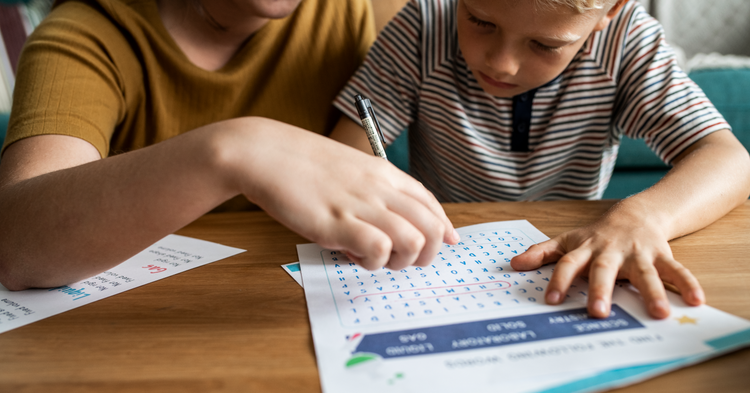Learning a new language can be a challenging task, especially for those studying English as a Second Language (ESL). To make the process more engaging and effective, teachers and learners need to employ creative and entertaining methods. One key aspect of language acquisition is vocabulary, and it's essential to teach it in a way that is enjoyable and memorable. In this article, we will explore five super-fun ways to teach ESL vocabulary that will make the learning process not only productive but also enjoyable.
Crossword Puzzles
When it comes to teaching vocabulary in the context of novel studies, crossword puzzles and word searches are my preferred games. In fact, even for those who speak English fluently, crosswords offer an effective method for review. Utilizing Crossword Weaver software, both you and your students can generate crossword puzzles quickly through a user-friendly and cost-effective software package. If you happened to overlook my previous post about the educational benefits of crossword puzzles in the classroom (or during tutoring sessions), you can refer to it here for more information.
Spelling Hangman
Spelling Hangman has been employed as a pedagogical method since my early tutoring experiences, initiated at the age of 15. In those formative years, my tutoring responsibilities primarily revolved around assisting young learners with their English assignments. These students displayed a marked enthusiasm for utilizing a magnetic whiteboard in conjunction with an assortment of colored markers.
The game of Spelling Hangman follows a straightforward procedure:
- Draw a man with blank spaces, so your students have to guess the word
- Write the definition of the word (or a clue or synonym for more advanced students) next to the hangman. This will help students connect the word to the concept
- Give students ample chances to guess. (Start with a stickman with a face and hair). Kids get really excited over this one, though. Don’t be surprised if they’re soon asking you to add a necklace and earrings, so they have enough chances to get it right!
- Tip: Let students draw on the whiteboard. They love it, really!
Furthermore, it is noteworthy that granting students the privilege of drawing on the whiteboard during this exercise serves as a particularly well-received and enjoyable component of the activity.
Flashcards: Memory Style
Recall the classic childhood game known as "Memory," in which cards were mixed and placed face-down, requiring players to find matching pairs while memorizing the cards' locations for subsequent turns. This approach is equally effective when applied to learning English vocabulary and its corresponding definitions, or in the case of teaching other languages, the equivalent terms.
The process unfolds as follows:
- Student A selects a pair of cards. If the word aligns with its definition, they successfully create a matched pair. In the event of a mismatch, both cards must be returned to their original position, face-down.
- Subsequently, Student B takes their turn, aiming to identify a matching pair.
- The student who accumulates the most matched pairs by the end of the game emerges as the victor.
Word Hunt
This activity is remarkably uncomplicated. It entails selecting a relatively lengthy word that students have been studying. For example, let's consider the word "PROCRASTINATION."
Here's how the game is played:
- Students inscribe the chosen word at the page's apex.
- The objective is for students to discover as many words as possible by rearranging the letters in the given word. Students are permitted to use letters repeatedly and arrange them in any order, provided the same letter does not appear twice within a single word if it is not repeated in the original word. For instance, "cast" would be a valid word, but "casts" would not be accepted, as there is only one "s" in "procrastination."
- Allocate a duration of 5 to 6 minutes for students to compile as many words as they can.
- The student who has amassed the greatest number of words at the conclusion of the allotted time is declared the winner.
*Additional Challenge: Assign extra points for words exceeding three letters, with two extra points awarded for words exceeding four letters.
Perfect Imagery
Perfect Imagery is a straightforward adaptation of the Word Hunt game, with a creative twist involving the use of images. For this version, you'll require photographs. Obtain stock images from online sources such as Unsplash, which offers a wide selection of royalty-free photos. Opt for images with plenty of details and visual elements. Print the chosen image in full color and place it at the center of the table where the game participants are positioned.
Here's how the game unfolds:
- Provide each student with sheets of paper marked from A to Z.
- Set a timer for a duration of 2 minutes. For younger children or ESL students, consider using a longer timer.
- During the allotted time, students are tasked with identifying as many words as possible that commence with each letter from A to Z, based on the image displayed.
- Tally the total number of accurate and correctly spelled words.
- Award one point for each word spelled correctly.
- Words that begin with challenging letters, such as X, Y, Z, or J, earn an additional point.
By incorporating images, Perfect Imagery adds an innovative dimension to the vocabulary-building game while maintaining its entertaining and educational aspects.
Conclusion
Teaching English as a Second Language (ESL) can be a daunting task, but by infusing creativity and fun into the process, it can become engaging and memorable. In this article, we've explored five exciting approaches to teaching ESL vocabulary.
We began with Crossword Puzzles, an effective tool for vocabulary reinforcement and review. We also discussed Spelling Hangman, a dynamic method using magnetic whiteboards. Memory-Style Flashcards provided a fun way to improve word retention, while Word Hunt challenged students to scramble and identify words. Lastly, Perfect Imagery added a visual twist to vocabulary exercises.
Incorporating these methods not only enhances vocabulary retention but also makes learning enjoyable and interactive. These techniques enrich the ESL learning experience and create a positive, engaging classroom atmosphere.
Happy Teaching!💜









